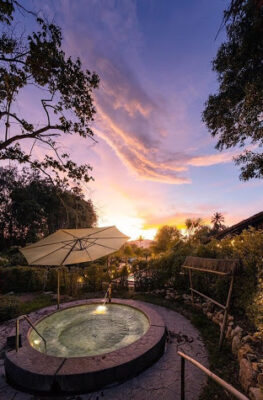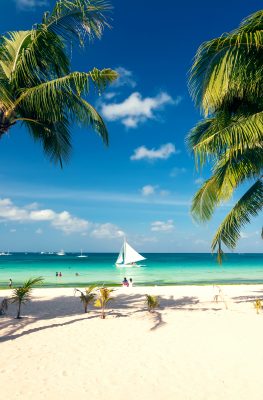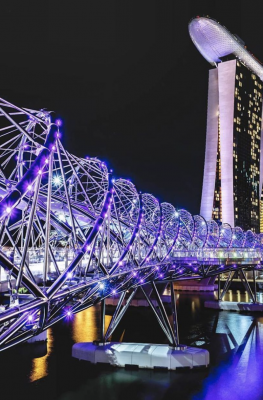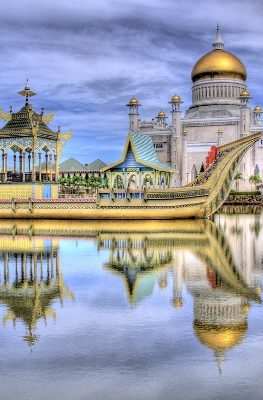Published on January 22, 2010
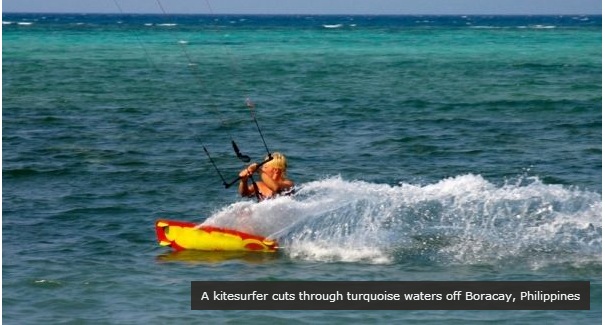
It’s a gorgeous sunny day on an idyllic tropical isle in the South China Sea. You’re on a kitesurfing board tearing along in a 20-knot side-shore breeze over a turquoise lagoon fringed by a coral reef. When the day is done you’ll have 50 prime beach-front bars to choose from, for your 2-for-1 piña coladas – and they will all be well-worthy of your patronage.
Welcome to Boracay. On the popular Philippine island, the northeast winds start to pick up in November and howl nearly unabated for four months before finally settling down a bit in March.
Boracay is best known for White Beach, a 3-mile strip of powdered sugary sand that just might be Southeast Asia’s finest beach. But the island is also an activities hub, and the activity it’s most famous for is kitesurfing (golf, sailing, windsurfing and myriad beach sports are other options on the menu). In the high season, dozens of parabolic kites create a technicolor explosion in the skies over Bulabog Beach, where the action is concentrated.
The key is the lagoon. Flat and shallow, it’s perfect not only for speed sailors but also for beginners and intermediate kitesurfers. Bulabog Beach is actually located off White Beach at the “back” side of the island. When the wind direction shifts from northeast to southwest in early November, the kitesurfing and windsurfing shops migrate from exposed White Beach, where there is challenging but inconsistent action in the off-season, to Bulabog.
Between November and February your problem in Boracay is more likely to be too much wind than not enough wind. But beginners take heart: Kitesurfing is learnable in heavy winds, provided the water is relatively flat and shallow enough to stand up in. Five or six serious kitesurfing schools offer relatively cheap lessons and plenty of top-of-the-line equipment for hire. If you go to Boracay in-season committed to learn, you will learn. Recommended operators offering 10- to 12-hour certification courses that will get you up and riding include Hangin’ (www.kite-asia.com), Islakite (www.islakite.com), Habagat (www.kiteboracay.com) and Ocean Republic (www.ocean-republic.com).
Boracay by no means has a monopoly on kitesurfing in Asia, although its mix of wind and chill party atmosphere is hard to emulate. In Viet Nam, Mui Ne, about 200km east of Ho Chi Minh City, is a rapidly growing kitesurfing hub. It lacks Boracay’s island vibe, but one advantage it does have is year-round wind, according to local instructors.
While Boracay’s high-season kitesurfing action is away from the partying action on White Beach, in Mui Ne it’s all located on the same glorious stretch of white sand wrapped around Mui Ne bay. The bay is deeper than Boracay’s lagoon, which makes conditions choppier a bit more difficult for beginners.
”Mui Ne does get choppy but that’s only because we get cranking 25-knot winds regularly,” says Scott Soothill, a senior instructor with Storm Kiteboarding Center (www.stormkiteboarding.com).
But for intermediate to advanced riders, Mui Ne is kite-surfing bliss. And beginners who learn here won’t get cheated.
“If you can do it here you can do it anywhere,” Soothill says.
There’s been an explosion of kite-surfing centers in Mui Ne over the last few years. Choose your operator carefully, as many of the cheaper ones aren’t uncertified. Along with Storm, other reputable, long-running opertors include Jibes (www.windsurf-vietnam.com) and Windchimes. All are associated with good resorts and have popular bars, so you can move seamlessly from bar, to water, and back to bar without wasting any excess energy.
Other good kitesurfing destinations in Southeast Asia include Bali‘s Nusa Dua beach (see www.balikitesurf.com), which like Boracay, has a shallow lagoon good for learning; and Thailand, which boasts several well-established kitesurfing centers on the Gulf of Thailand, including Pattaya, Hua Hin, Chumphon and Koh Samui. The latter two feature shallow lagoons similar to that found in Boracay, making them good options for beginners. www.kiteboardingasia.com and www.kitethailand.com have everything you need to know about kitesurfing in Thailand. The windy season in Bali and the Gulf of Thailand is November to March.
Greg Bloom is a Phnom Penh-based writer and editor who has co-written Lonely Planet guides to the Philippines and Cambodia.



